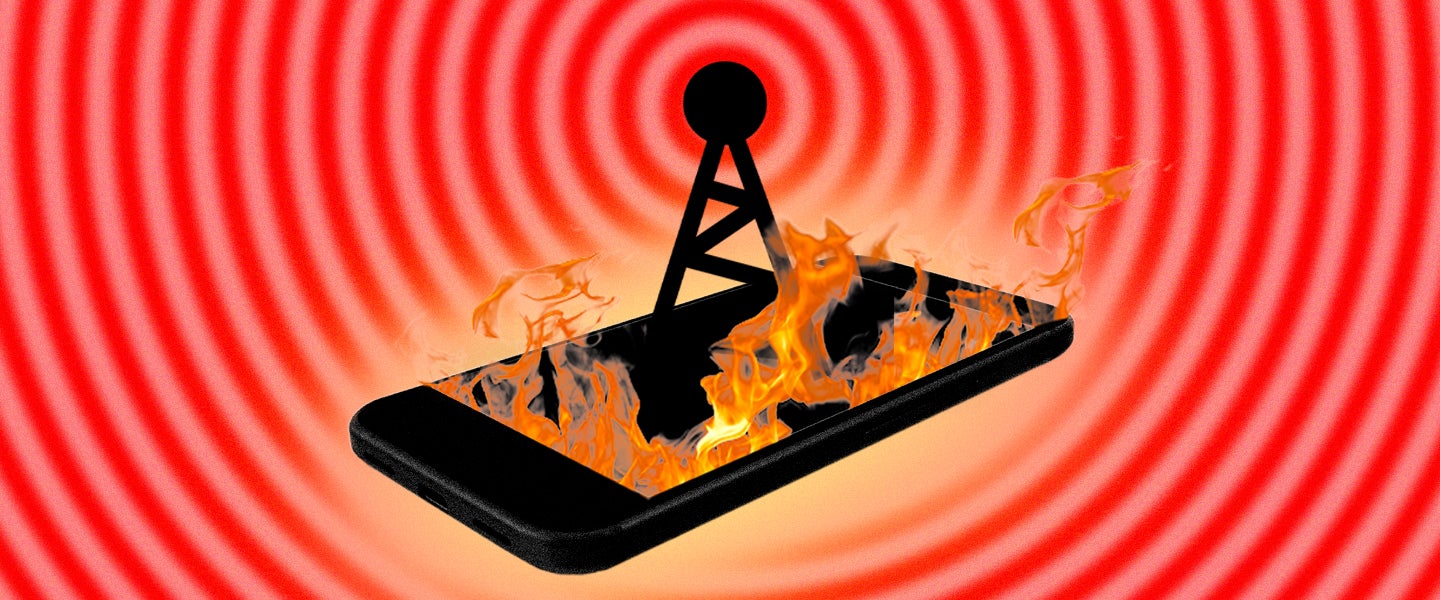If you rely on your workplace, school or even your local coffee spot for access to the internet, quarantine can feel a bit like living in the Dark Ages, but with fewer swords and more toilets. And even if you do have access to home internet, everyone suddenly working, learning and streaming from home has sometimes overwhelmed our local cyberspace infrastructure, resulting in some seriously frustrating slowdowns.
In either case, you might be wondering, what is a hotspot, and should I get one? Put simply, mobile hotspots can connect you to the internet without you having to rely on your home internet, meaning you can use them to connect to the internet pretty much anywhere. There are some drawbacks to mobile hotspots, though, so before you buy one or chuck your home router out the window because your YouTube video has been buffering for 69 minutes, we need to discuss some of the basics.
First of all, there are two main ways to access mobile hotspots: You can use your smartphone as a mobile hotspot, or you can purchase a dedicated mobile hotspot. If your smartphone connects to a 4G cellular network, turning on the hotspot function essentially converts that data into a signal for other devices, like your laptop or tablet, to share. Dedicated mobile hotspots do virtually the same thing, except they tend to support more devices, can be hooked up to better antennas and can have separate, prepaid service plans.
The most obvious shortcoming of mobile hotspots is that they deliver a weaker, less reliable internet connection than home internet. As IT expert Zack Gaudet explains, 4G networks have an average download speed of 15 to 30 Mbps, whereas the average home internet download speed clocks in at around 90 Mbps. While mobile hotspots are generally fine for basic work and poking around the internet, any high-definition streaming or gaming will almost certainly be negatively affected by those slower download speeds.
The other major shortcoming of mobile hotspots, especially using your smartphone as a mobile hotspot, is that they tend to have limitations on how much data you can use before having to shell out more cash, even if you have an unlimited plan. For example, per the Verizon website, “With the Verizon Plan Unlimited, you get a 15 GB allowance of high-speed 4G LTE data for Mobile Hotspot and Jetpacks each billing cycle. Once you’ve used the 15 GB of 4G LTE data, your Mobile Hotspot data speed will be reduced to up to 600 Kbps for the rest of the billing cycle. You can buy a Data Boost for a line on your account, to resume mobile hotspot’s 4G LTE speed for that line.”
In other words, if you use more than 15 GB of mobile hotspot data within a month, Verizon will slow your hotspot the fuck down (although, they did just provide customers with an extra 15GB of data to help out during the coronavirus).
If you think being slowed down from 4G to 600 Kbps would have little impact on you — or if you just have no idea what that even means — well, it will. “Using Spotify as an example, each song streamed would be about 2 Mb, so 40 Mb an hour,” Gaudet explains. “Twenty hours would be about 1 GB, so you’d have about 300 hours of Spotify music streaming in a month before you’d be data capped.” And that would be if you were only streaming music.
Or as this article on TechHive explains, “Netflix consumes at least megabits per second, or 2.25 GB per hour, in HD. Even with the most generous of these plans — that’d be Sprint’s Unlimited Premium with 100 GB — you’d only get to watch about 44 hours of TV per month before hitting the limit. Other plans would limit you to less than 10 hours of HDTV per month, and that’s assuming you don’t use home internet for anything else.”
With only 600 Kbps, even a simple download can take forever. “Say you have a 1 GB file on Google Drive that you want to download to your phone,” Gaudet explains. “With a connection speed of 30 Mbps — the average hotspot and LTE speed under good conditions — it would take about five minutes. With a throttled connection speed of 600 Kbps, it would take 3.9 hours.”
Shit.
Going by all of these numbers, if you use the internet like most people do, you’ll likely end up burning through your mobile hotspot data and being forced to pay for extra, which is exactly what the internet providers and cellular companies are hoping will happen. That being the case, relying on a home internet connection is better in most situations, unless you hardly use the internet at all or are out and about, which you shouldn’t be right now. “Ninety-nine percent of the time, your home network is going to be a much better option, but if you’re at Starbucks or something, and their internet is overloaded, it might be a better option to use your phone or hotspot,” Gaudet says.
If you have no home internet and you already burned through your mobile hotspot, however, some cellular networks and internet services providers have opened up a few public hotspots for free to help those struggling with the coronavirus. But if you do have access to home internet, even if you keep running into slowdowns, mobile hotspots are unlikely to perform any better, and again, can become costly if you rely on them frequently.
That said, we can definitely revisit this conversation when 5G becomes a thing… unless the conspiracy theorists keep burning all the damn towers down.

